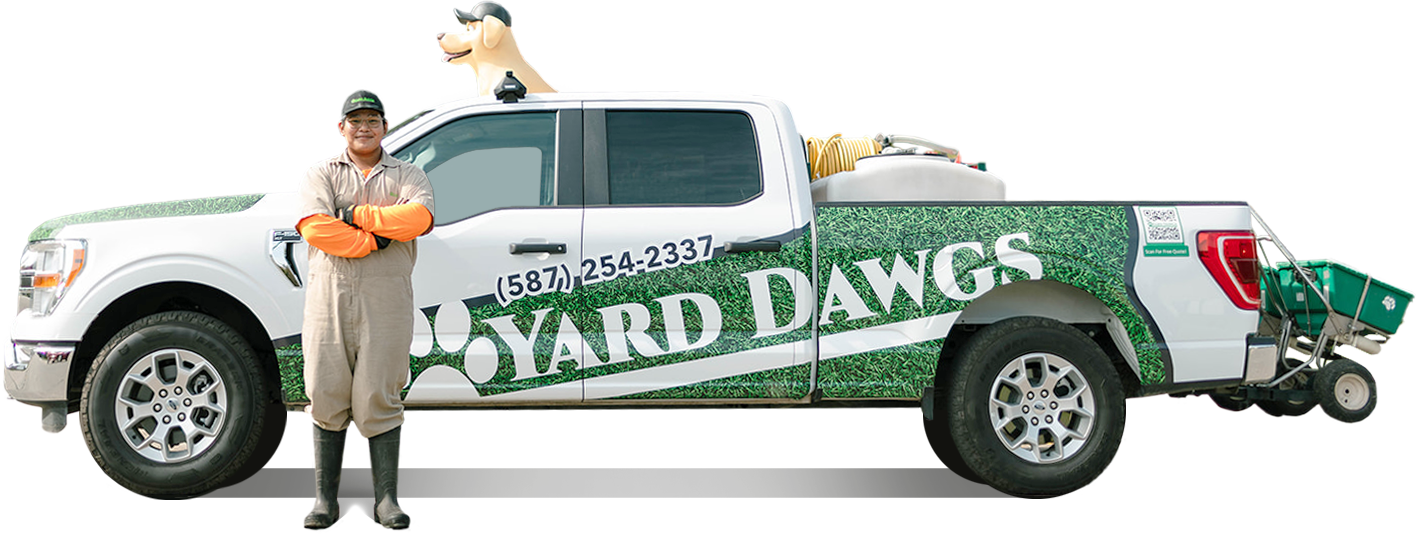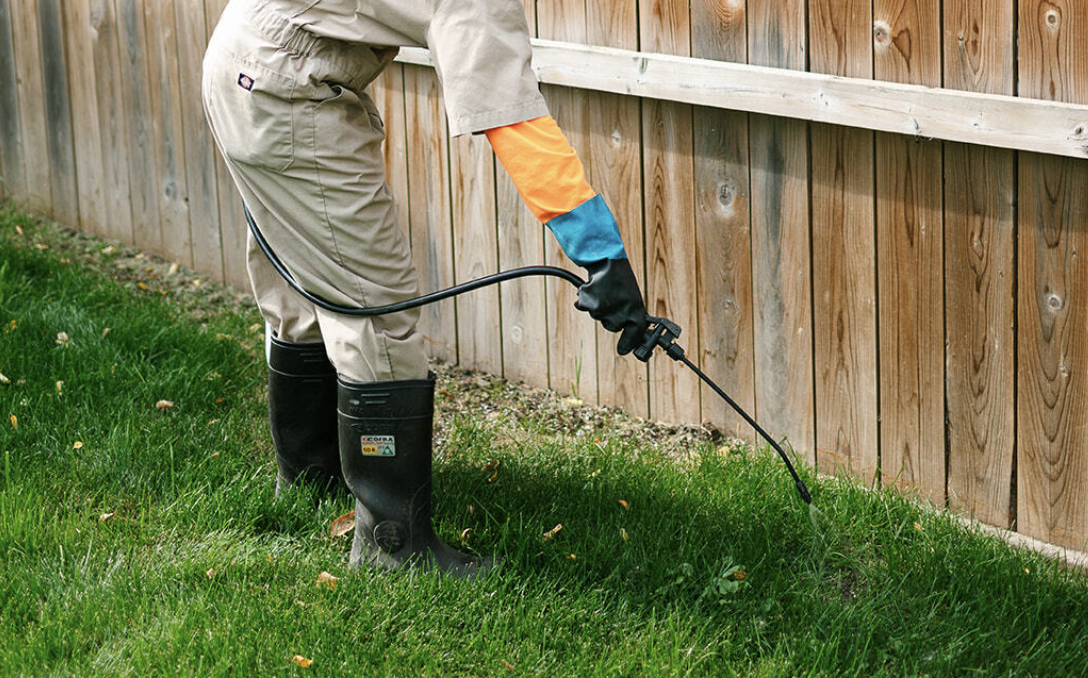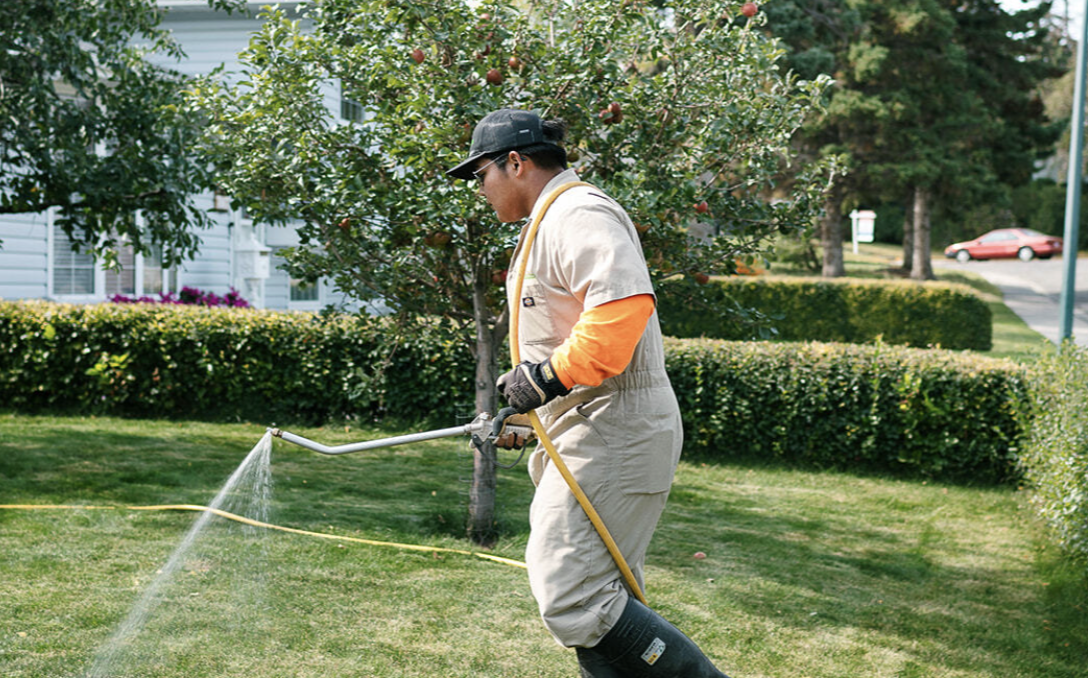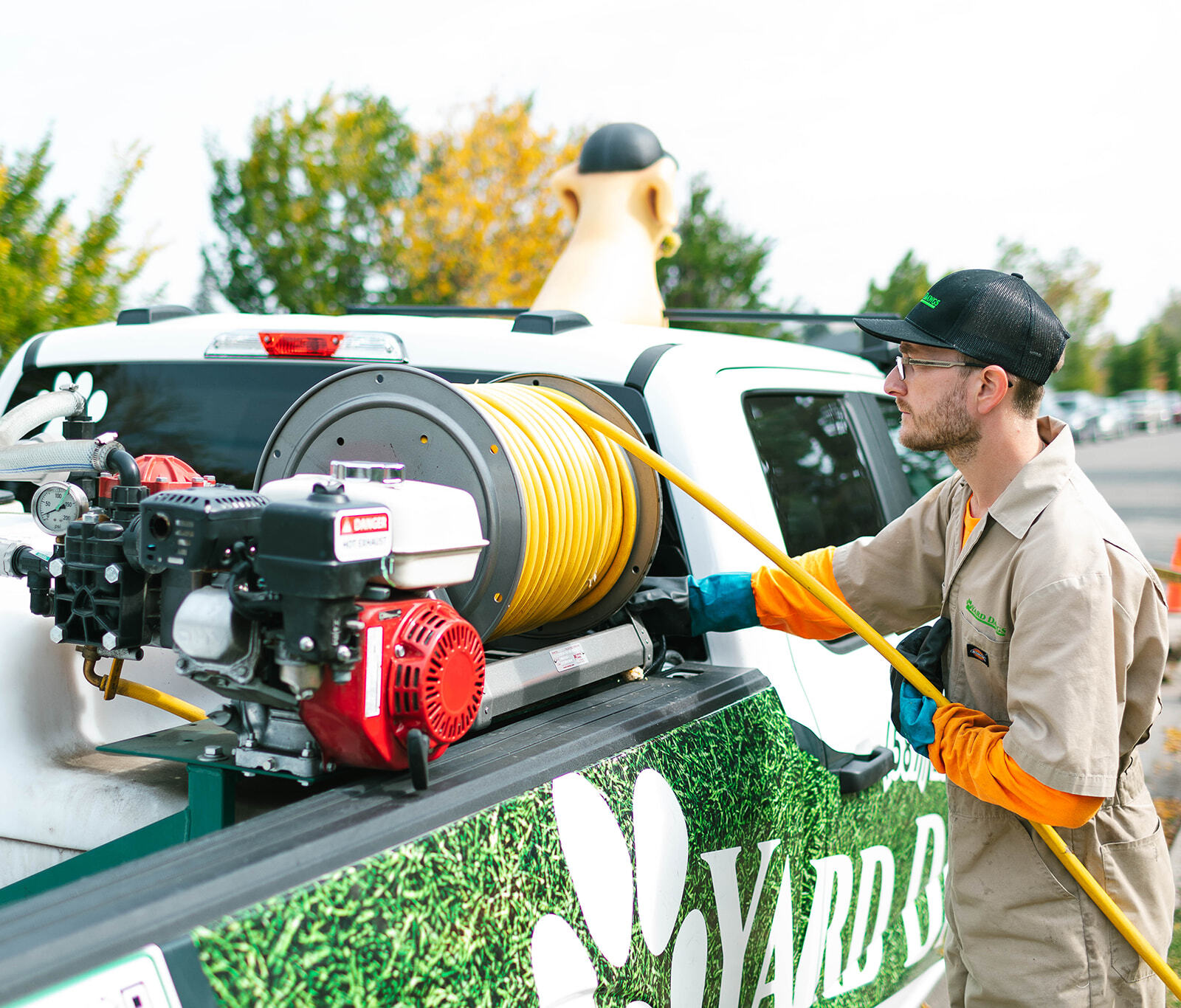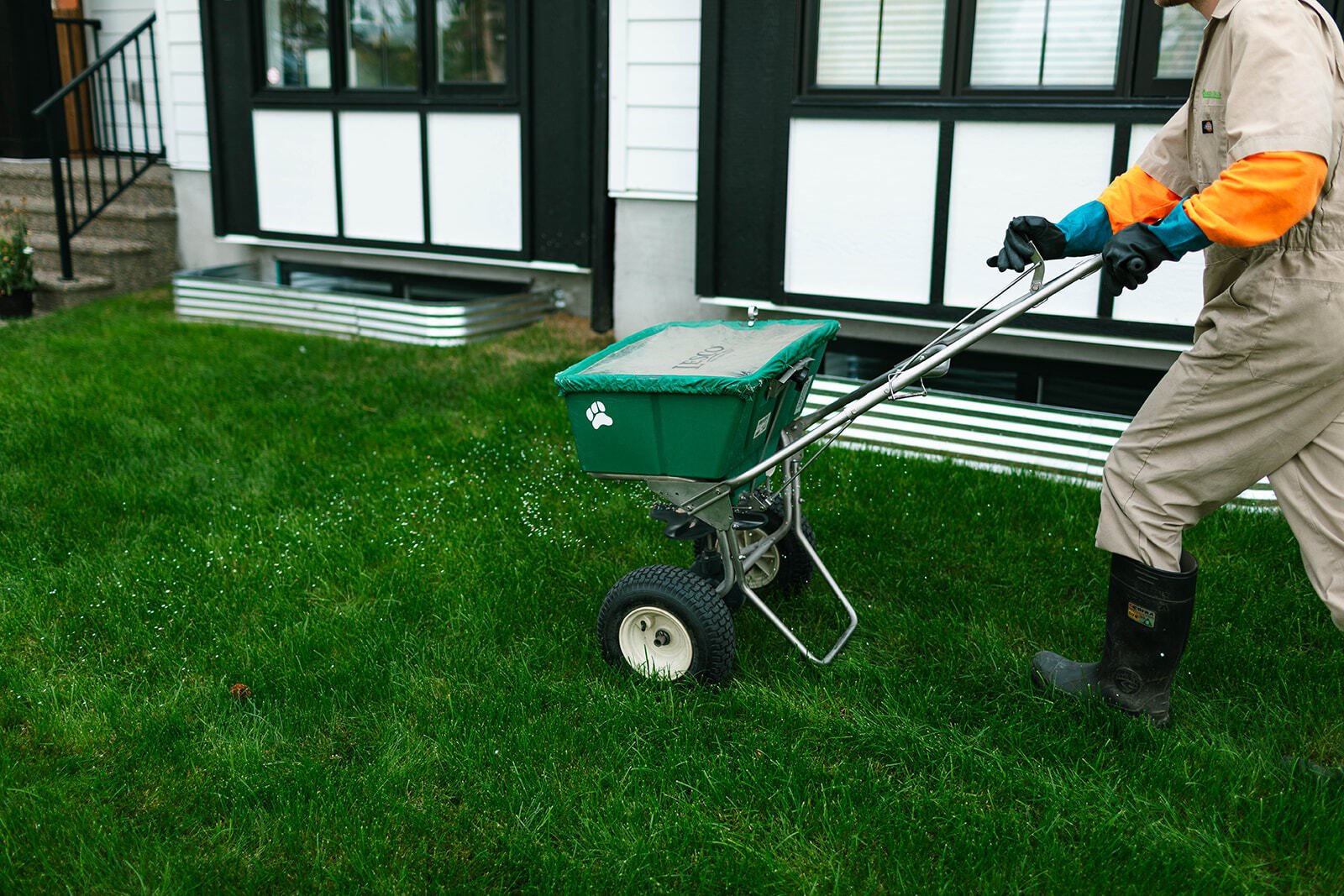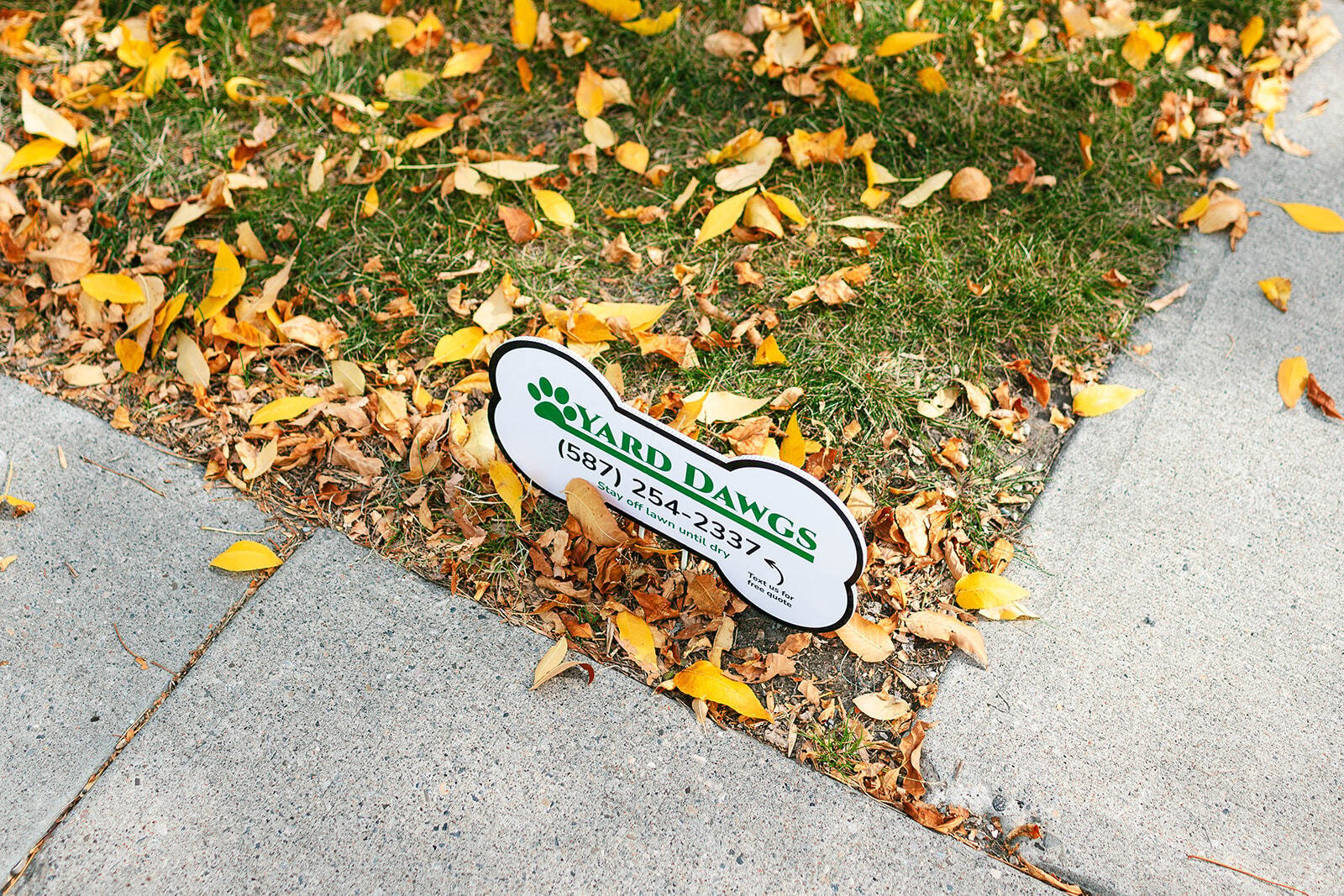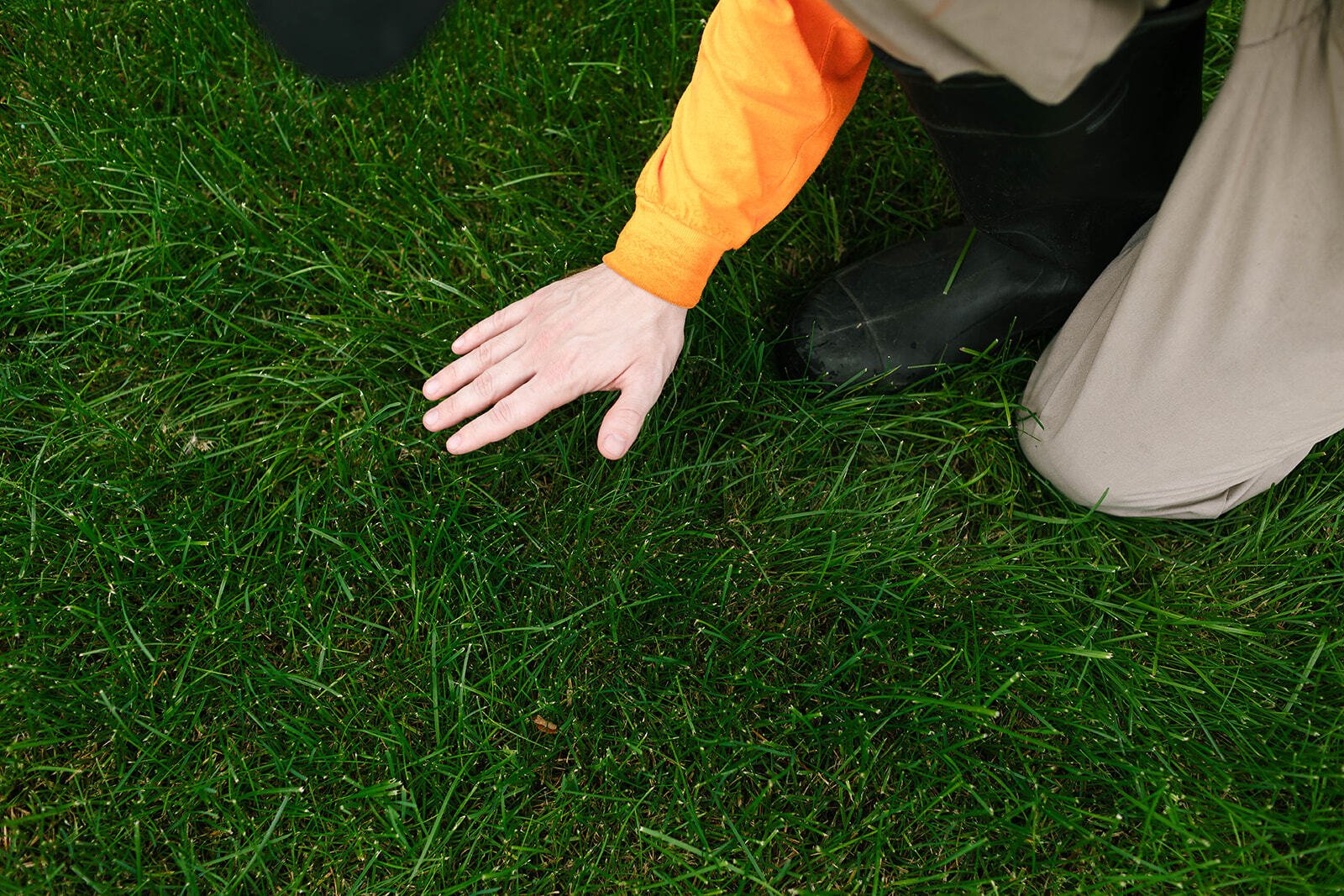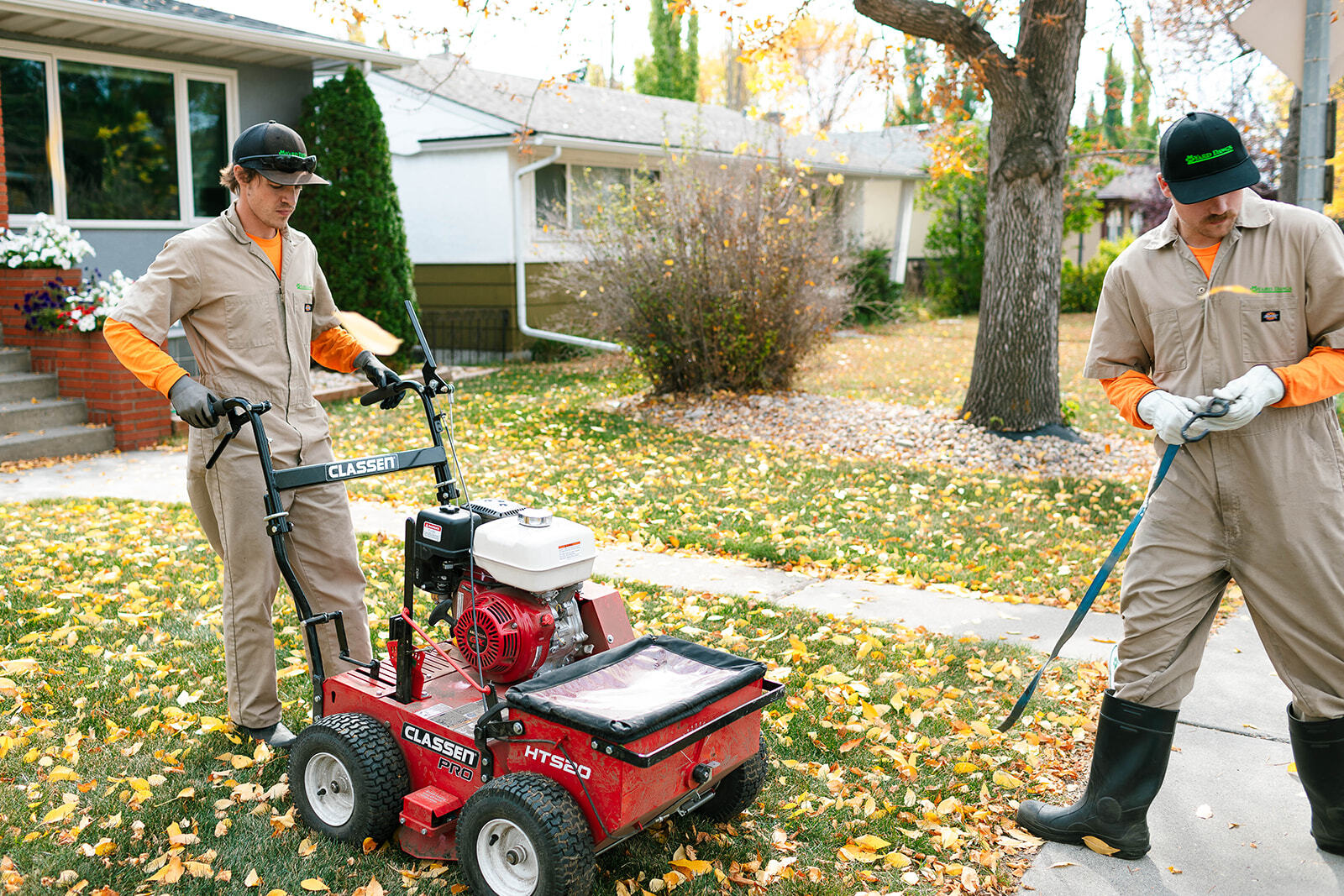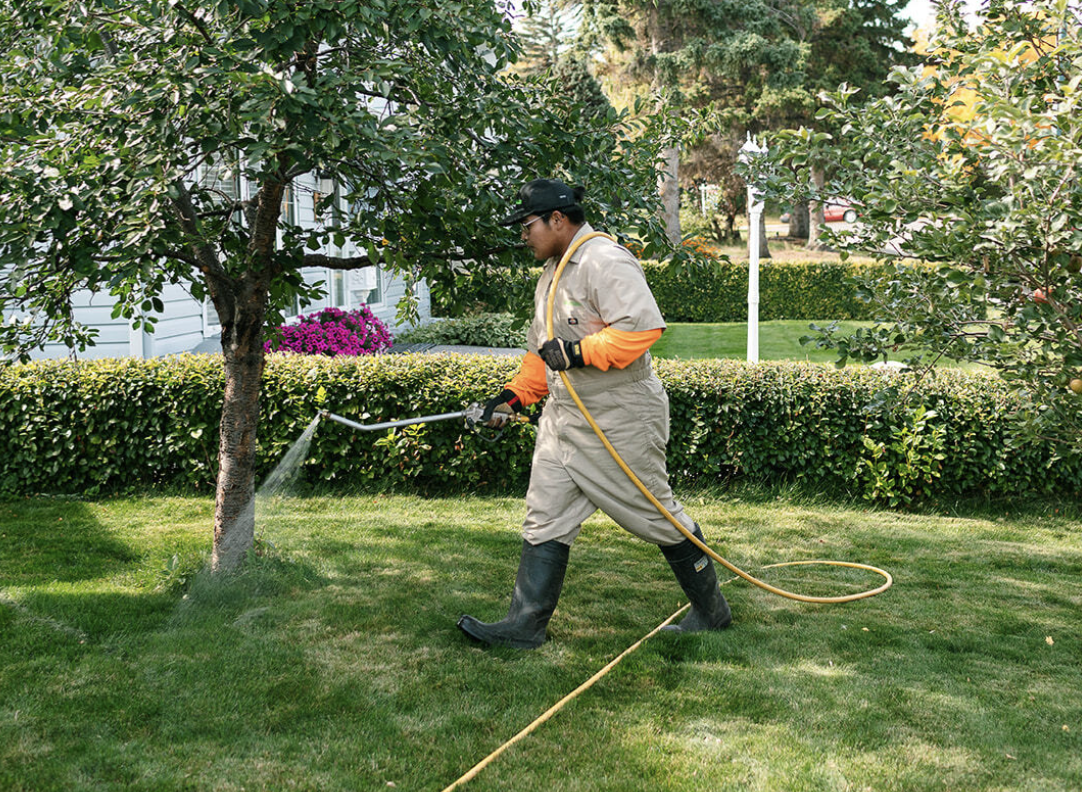Chinch bugs can wreak havoc on Calgary lawns, especially during hot, dry summers. These tiny insects feed on grass, leaving behind yellow patches that quickly turn brown and die.
If your lawn is showing signs of damage, it’s important to act fast. This article covers how to identify chinch bug infestations and the best ways to repair your lawn and prevent future outbreaks.

What are Chinch Bugs
Chinch bugs are tiny lawn pests that can cause major damage if left untreated. These insects feed by sucking the juices from grass blades, injecting toxins that block water movement in the plant. As a result, the grass turns yellow, then brown, and eventually dies. They are most active in hot, dry conditions, making Calgary summers ideal for infestations to thrive.
Despite their small size, typically only about 4 mm long, chinch bugs can quickly destroy large sections of a healthy lawn if not dealt with properly.
Reasons for Chinch Bugs
Chinch bug infestations don’t happen randomly. Certain lawn and weather conditions make your yard more attractive to these destructive pests. Below are some of the most common reasons chinch bugs might be targeting your lawn.
Prolonged Heat and Drought
Calgary summers can be hot and dry; those conditions are ideal for chinch bug activity. These pests thrive in warm temperatures and low humidity, and drought-stressed lawns are more vulnerable to their feeding. When grass is already struggling for moisture, chinch bug damage can escalate quickly.
Thatch Buildup
Thatch is a layer of dead grass and organic material that builds up between the soil and the grass blades. When this layer becomes too thick, it creates the perfect hiding spot for chinch bugs. It also blocks water from reaching the roots, creating additional stress that weakens your lawn and makes it easier for pests to take over.
Poor Lawn Maintenance
Infrequent mowing, inconsistent watering, and neglecting fertilization can all contribute to a weak and vulnerable lawn. A poorly maintained lawn has less resistance to pest damage, making it easier for chinch bugs to establish themselves and spread throughout the yard.
Overuse of Nitrogen Fertilizer
While fertilizing is essential for healthy grass, overdoing it, especially with high-nitrogen products, can make your lawn appealing to chinch bugs. Lush, fast-growing grass provides an ideal feeding ground for these pests. It also becomes more prone to drought stress, which further attracts them.
Compacted Soil
When your lawn’s soil is compacted, water and nutrients have difficulty reaching the roots. Grass growing in compacted soil is weaker and more stressed, making it an easy target for chinch bug infestations. Regular aeration helps prevent this issue and keeps your lawn healthier overall.
How to Identify Chinch Bug Damage
Chinch bug damage can easily be mistaken for drought stress or other lawn issues, which is why proper identification is key. Knowing what signs to look for can help you catch an infestation early before it spreads and ruins large sections of your lawn. Here are the most common indicators of chinch bug damage in Calgary yards.
Wilting Grass
Wilting is one of the earliest signs of chinch bug activity. As the bugs feed on grass blades and block water flow, the lawn begins to show signs of stress, even if you’re watering regularly.
- Grass blades appear limp or shriveled despite adequate watering
- Affected areas may feel dry and brittle to the touch
- Wilting tends to start in sunny spots and expand outward.
Yellowing to Straw-Coloured Patches
As chinch bugs continue feeding, the damaged grass changes color from green to yellow and eventually to a straw-like brown. This color shift is a clear sign that the lawn is not recovering.
- Patches of grass turn pale yellow and spread gradually
- Areas resemble drought damage but don’t improve with watering
- The grass feels dry, thin and easily breaks when pulled.
Dead and Healthy Grass Interface
One of the most telltale signs of chinch bug damage is a sharp contrast between healthy green grass and dead patches. This edge is where bugs are actively feeding and moving.
- A defined line between brown, dead grass and green, healthy turf
- Damaged area expands outward over time
- New patches of yellow or brown begin to appear just beyond the edge.
Odor
You may even notice a faint but distinct odor when walking across the lawn in larger infestations. This scent comes from the bugs themselves as they are crushed underfoot.
- A musty or sour smell in areas of heavy infestation
- Odour may be stronger after mowing or during warm weather
- The scent is usually concentrated around visibly damaged areas.
How to Prevent Chinch Bug Infestation
Preventing chinch bugs starts with consistent lawn care practices that keep your turf healthy and resilient. While these pests can be persistent, maintaining the right conditions makes your lawn far less inviting to them. Here are some effective ways to reduce your chances of an infestation.
Keep Grass at a Healthy Height
Mowing your lawn to the right height helps reduce stress on the grass and limits chinch bug activity. Avoid cutting it too short, as this exposes the soil and weakens your turf. Aim to keep your grass around 2.5 to 3 inches tall for stronger, more pest-resistant growth.
Do Not Overwater
While watering is essential, too much can do more harm than good. Overwatering leads to shallow roots and creates a damp environment that attracts pests. Water deeply but less frequently, allowing the top layer of soil to dry out between sessions.
Remove Thatch
Thatch is a common hiding place for chinch bugs. If it builds up too much, it can trap moisture and block nutrients from reaching your grass roots. Dethatching once a year and aerating regularly can help keep this layer in check and your lawn healthier overall.
Weed Control
Weeds compete with your grass for essential resources and weaken your lawn’s defenses. Keeping your lawn weed-free through proper mowing, fertilizing, and targeted treatments helps reduce stress and makes it harder for chinch bugs to take hold.
Hire Professionals
If chinch bugs are a recurring problem or you’re not sure how to tackle them, it’s best to bring in the pros. Lawn care experts like Yard Dawgs can assess your lawn, apply effective treatments, and provide preventative services to keep your grass green and pest-free.
-jpg.jpeg?width=1600&height=1366&name=yard%20dawgs-85%20(5)-jpg.jpeg)
Let Yard Dawgs Handle Your Chinch Bug Problem
Dealing with chinch bugs can be frustrating, but you don’t have to do it alone. At Yard Dawgs, we specialize in identifying and treating lawn pest issues across Calgary. Our team knows exactly how to repair the damage and restore your lawn to full health.
Let us take the stress off your shoulders—book your service today and get your lawn back on track.


